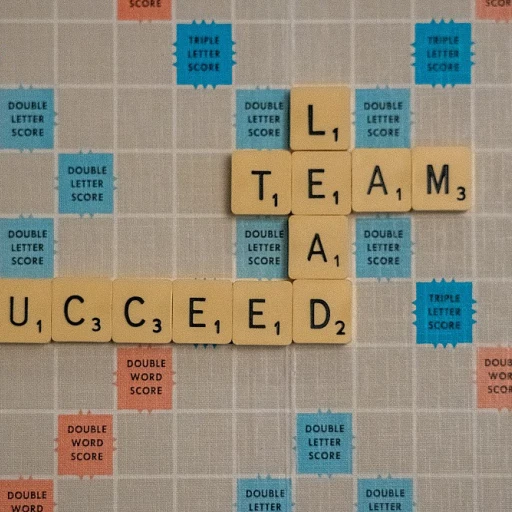Understanding the Role of a Chief Human Resources Officer
The Strategic Role of a CHRO in Modern Organizations
The Chief Human Resources Officer (CHRO) plays a pivotal role in shaping the workforce dynamics of an organization. In today’s fast-paced environment, the integration of informatics and technology within healthcare and other sectors is paramount. CHROs are at the forefront of this transformation, overseeing the alignment of people, processes, and technology to ensure optimal performance and innovation.
Key Responsibilities and Competencies
CHROs are tasked with more than just traditional human resource management. They are strategic partners in decision making, focusing on:
- Change Management: Guiding organizations through digital transformation and socio-technical shifts, ensuring that employees are equipped to adapt to new processes and technologies.
- Data-Driven Decision Making: Leveraging data and health informatics to make informed decisions that enhance patient care and employee performance.
- Implementation of Technology: Overseeing the integration of EMR and other digital tools to streamline operations and improve clinical decision support.
- People Process Management: Developing frameworks that support the continuous education and development of nurse leaders and other healthcare professionals.
CHROs and the Future of Work
As organizations increasingly embrace remote work and flexible arrangements, CHROs are instrumental in navigating these changes. They are responsible for creating a work environment that supports both in-person and remote employees, ensuring that all team members have access to the resources and support they need to succeed. For more insights on how CHROs are adapting to these challenges, you can explore navigating the future of human resources.
The Intersection of Nursing Informatics and HR Leadership
Navigating the Interface of Nursing Informatics and HR
The intersection of nursing informatics and human resources leadership is a dynamic one, fostering a collaborative environment where technology, people, and processes converge to enhance healthcare. At the core of this relationship lies the principle of leveraging health informatics and data management to facilitate better decision-making and ensure high-quality care. HR leadership in this intersection plays a critical role in facilitating digital transformation and fostering a culture of continuous improvement. In this context, HR leaders must understand the potential of digital technologies and data analytics in streamlining processes in health care. This includes integrating electronic medical records (EMR) and implementing frameworks to support clinical decision-making. The role of nurse leaders becomes pivotal in this socio-technical landscape, as they guide teams through the nuances of EMR implementation and the integration of clinical data. A strategic HR approach involves adopting a digital HR strategy that aligns with technological advancements in the healthcare sector. Such a strategy not only improves operational efficiency but also enhances patient care by ensuring that nurses and other healthcare providers have access to real-time information. By focusing on aspects like change management and the integration of technology PPT frameworks, HR leaders support a seamless transition to more sophisticated healthcare delivery models. Moreover, the amalgamation of people, process, and technology in nursing informatics is crucial for effective health care delivery. HR leaders must create a supportive environment where educational programs in informatics are designed to train nurse leaders, promoting a workforce that's adept at utilizing emerging technologies. This incorporates change management strategies, fostering an adaptive culture ready to embrace advances in patient care and management processes. In creating a collaborative framework for nursing informatics and human resources, the focus should be on empowering nurses through education and ongoing support. By fostering an environment that encourages innovation, HR leaders help to bridge the gap between technology and compassionate patient care, ensuring the well-being of both patients and healthcare practitioners alike.People: The Core of Nursing Informatics
Placing People at the Forefront of Nursing Informatics
The integration of people in the healthcare landscape cannot be overlooked. In nursing informatics, the human element plays a pivotal role when merging technology and processes. Nurses, patients, and other stakeholders are at the heart of this integration, where the goal is to enhance patient care through informed decision-making and streamlined operations. The people involved—nurses, health professionals, and patients—form the core of nursing informatics. As healthcare evolves, it’s vital that professionals adapt to changes in health and technology without losing sight of human-centric care. Nurse leaders and CHROs must ensure that healthcare employees are adequately trained and supported in the digital transformation journey. This involves ongoing education and clear communication about new technologies and processes. Decision support and change management processes are fundamental to ensuring that this human focus is maintained. According to the Strategic CHRO Blog, fostering an environment where open dialogue supports transformation can lead to more successful technological implementation, ultimately benefiting patient care. Nursing informatics, intertwined with health informatics and socio-technical systems, emphasizes the importance of a framework where people process and technology coexist effectively. It requires a balance where healthcare workers can adapt without compromising patient relations or care quality. Through engaging and training healthcare professionals, the field of nursing informatics can advance, allowing technology to enhance rather than hinder human interaction. Successful emr implementation and data management processes can lead to improved patient outcomes, reinforcing the critical role of the people who drive health innovation.Technology: Driving Innovation in Healthcare
Embracing Technological Innovation in Healthcare
Technology has become a pivotal driver of advancement in healthcare, fundamentally changing how nurse leaders and Chief Human Resources Officers approach nursing informatics. The integration of sophisticated technological tools is shaping decision-making processes, enhancing patient care, and streamlining operations across various healthcare settings. This transformation involves a cohesive blend of technology, people, and process management. One significant aspect of this integration is the Electronic Medical Records (EMR) implementation. EMR systems aid in simplifying patient data management, leading to improved care processes. By allowing seamless access to patient information, they enhance clinical decision support, facilitating timely and informed decision-making for nurses and healthcare professionals. As a result, healthcare delivery becomes more efficient and effective. Moreover, the influence of digital transformation in healthcare extends to education and continuous learning opportunities for nurses. Implementing training programs that focus on technology-driven practices ensures that healthcare providers stay updated with the latest trends in health informatics. This not only boosts the competency of nurses but also aligns with the organization's goals of fostering a responsive healthcare environment. The socio-technical aspect plays a vital role in healthcare technology adoption. It emphasizes the interaction between people and technological frameworks within healthcare facilities. This aspect highlights the importance of developing a culture that supports change management and encourages the implementation of new technology frameworks. Through careful consideration of both human and technical elements, organizations can achieve a harmonious balance that supports effective nursing practice and healthcare delivery. Investing in the processes technology also contributes to efficiency improvements in nursing informatics. By optimizing these processes, healthcare organizations can reduce redundancies and focus on delivering high-quality care. Engaging in change management strategies ensures that transitions to new systems and technologies are smooth and welcomed by healthcare staff. Technology, when strategically integrated into healthcare, has the power to transform not only the operational dynamics but also the core infrastructure of healthcare delivery. Embracing these advancements is imperative for modern healthcare environments striving for excellence in patient care and organizational efficiency.Processes: Streamlining Operations for Better Outcomes
Streamlining Operations in Healthcare
The integration of effective processes in health informatics plays a pivotal role in streamlining operations and enhancing patient care outcomes. As healthcare systems are often complex and multifaceted, the alignment of process technology with patient care becomes crucial. This not only involves innovative EMR implementation but also emphasizes the need for efficient decision-making frameworks.
Central to this integration is the PPT framework—People, Process, Technology—that enables healthcare organizations to optimize resources and improve service delivery. With nursing informatics at the core, aligning technological advancements with nursing practice can lead to significant transformations in the healthcare industry. The socio-technical approach ensures that all elements work cohesively, thus improving both staff efficiency and patient satisfaction.
Data management and decision-support tools are equally critical in this scenario. By leveraging health informatics, nurse leaders can harness data analytics to support clinical decisions. This is integral not only for patient care but also for tracking health care trends and outcomes. As digital transformation continues to evolve, it becomes essential to create a robust process framework adaptable to change management and continuous improvement in operations.
Educational programs for nurses and healthcare professionals are integral to the process. Implementing ongoing training ensures that staff is well-versed in the latest informatics tools and health care technologies. This not only boosts the efficacy of technological interventions but also enhances the staff’s decision-making capabilities in clinical settings. Comprehensive education strategies are vital for cultivating skilled professionals capable of navigating complex health systems.
In conclusion, the success of implementing streamlined processes in health informatics hinges on the harmonious integration of people, process, and technology. The continuous evolution of digital tools and frameworks, supported by thorough education and a strategic approach to change, ensures improved health outcomes and a more efficient healthcare delivery system.
Future Trends in Nursing Informatics and HR Leadership
Navigating the Convergence of Informatics and Human Resources
The integration of nursing informatics with HR leadership is an evolving landscape that offers a wealth of opportunities and challenges. As technology continues to advance, healthcare organizations are increasingly relying on robust informatics systems to streamline operations and enhance patient care. This evolution requires nurse leaders to become adept at leveraging digital tools and frameworks like the EMR (Electronic Medical Records) to support clinical decision-making processes.- Technological Evolution: The rapid digitization of healthcare processes remains a driving force behind new strategies being adopted by Chief Human Resources Officers (CHROs). Digital transformation in the sector is crucial for optimizing care delivery and improving decision support mechanisms. Ensuring that nursing professionals are equipped with the necessary skills and education in informatics is vital.
- Data-Driven Decision Making: Decisions in healthcare are increasingly informed by data, thanks to advancements in health informatics. This shift underscores the importance of having a solid data management framework in place, which can effectively gather, analyze, and apply information for better outcomes.
- Socio-Technical Integration: Balancing the integration of human resources with advanced informatics tools requires a socio-technical approach. Addressing the human element in technology adaptation is crucial. This involves considering socio-economic factors and ensuring alignment with the organization’s HR strategies.
- Change Management: Implementing new technologies demands effective change management strategies. CHROs, in collaboration with nursing informatics professionals, must facilitate a seamless transition by promoting a culture open to change. Development of a process technology that is aligned with the organization’s objectives is essential.








